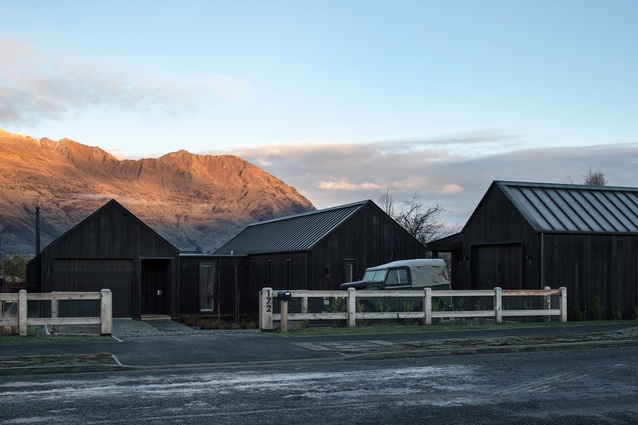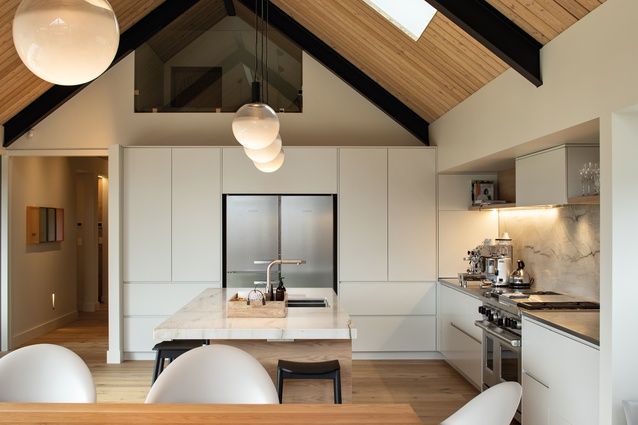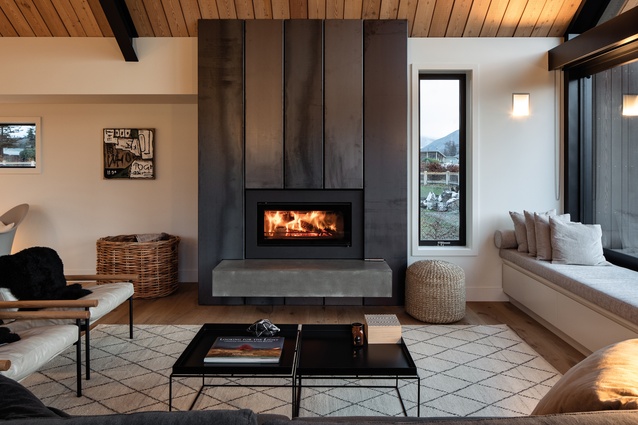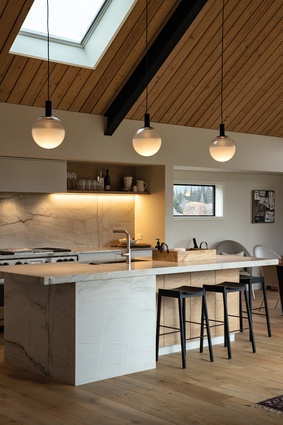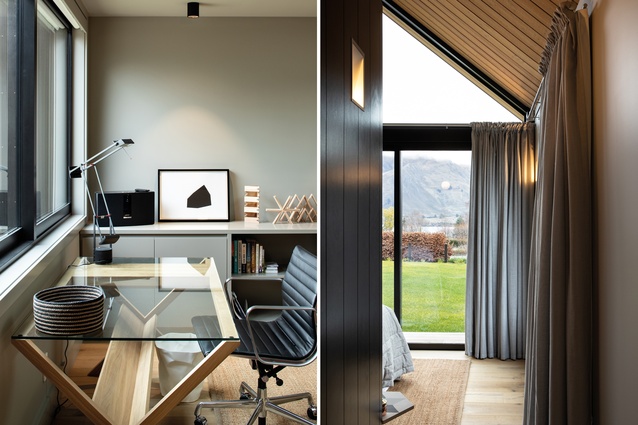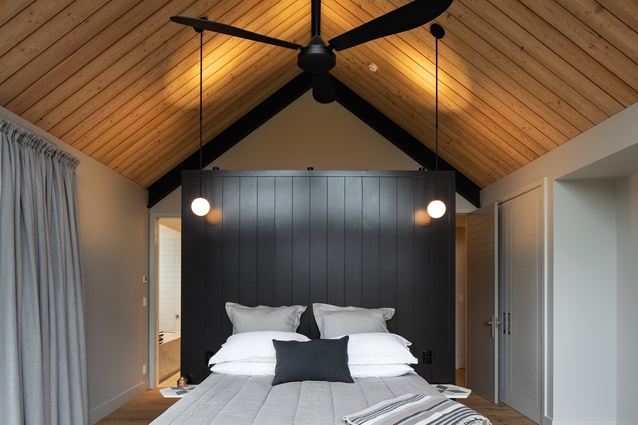Mountain living: Roys Peak House
A contemporary Mason & Wales Architects holiday house in Wanaka pays homage to the ‘crib’, the classic South Island back-country tramping hut.
Traditionally, a New Zealand back-country tramping hut has a modest profile with a subtly pitched roof and, while often painted in bright colours to stand out in a storm, it seems at one with the landscape thanks to its purely practical design.

This holiday house in Wanaka, designed by Mason & Wales, has echoes of the form and rustic look of a Department of Conservation hut but at a larger and more contemporary scale.
“Crib is a South Island word for cabin or simple shelter, which originally came to the Southern Lakes region in the form of primitive shelters for shepherds and, then, the Gold Rush,” explains architect Hamish Muir. “We joke that this is like a contemporary crib, even though it clearly has more amenity and scale.”
Aside from the subtle pitch, the cladding goes a long way in achieving this modest aesthetic. Dark-stained cedar boards of randomised width soften the texture of the exterior and convey a sense of history. From the street and driveway, the house and its adjacent boatshed appear closed off, with narrow windows providing glimpses in and out of the house.
However, as you enter and walk through the hallway into the living room and kitchen, the big view of Roys Peak opens up ahead. The house makes use of structural insulated panels, which give excellent insulation as well as allowing for the wide-spanning pitched ceiling inside this pavilion space.
The material palette inside is understated and slightly rustic, with blackened steel on the fire surround and oak floorboards. A window seat stretches across the living room, inviting relaxation and enjoyment of the view. Art plays a big part in the interior design, as the homeowners are avid art collectors.
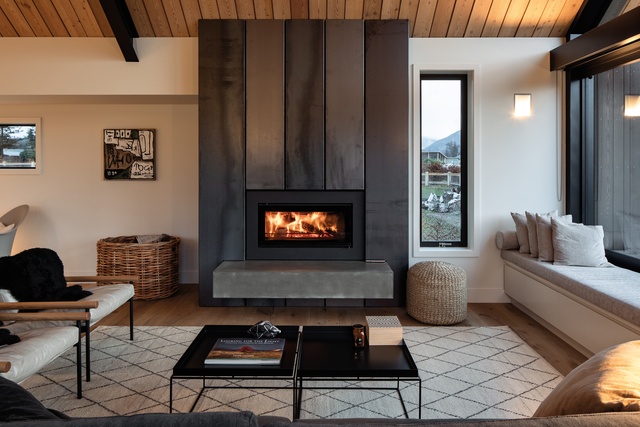
A painting by Stephen Bambury called The Black House was gifted to the owners by the architects and provided inspiration for the design of the home. This is on display in the study space, which connects the living room pavilion to the private areas of the house.
The bedrooms are designed to be spacious but also practical for holiday use, allowing for plenty of storage of winter gear and holiday necessities. This is also the reason for minimising internally accessed garage space, says Muir.
“The homeowners wanted the house to be lifestyle and activities-focused. It’s a retreat and haven but, also, potentially a second office. A double-garage door feels suburban and doesn’t fit with the mountain aesthetic. We have the single garage with internal access for bad weather and, eventually, for when the homeowners get older, but the rest of the time the car can live in the boatshed.”

A summer house, designed with the same materials and form as the house itself, sits across the lawn from the living area. This provides a sheltered spot to retreat from the sun in the summer, with a pizza oven and spa pool. It also offers privacy from the neighbouring driveway that runs along the edge of the property.
“It was the homeowners’ idea to remove yourself from the house for the retreat there, and we worked hard to create the right space,” says Muir. “The trick is to do it well and make sure it is used, otherwise it could have dominated the house or obstructed the view. The summer house is about as close to the setback as it can get with clever landscaping to buffer that. Really, without great furniture and art and landscaping, the whole project wouldn’t have come together.”
***

Material Palette
Architect Hamish Muir discusses the materials chosen for the Roys Peak House.
Why use structural insulated panels (SIPs)?
We were interested to try the new locally made SIPs for the roof, having previously worked with imported products. Our client was experienced in the construction industry and was comfortable to innovate, and the structural engineer and contractor were interested to give it a go. The roof and ceiling forms were an important part of this design and they became relatively easy to achieve, with the added benefit of a high performance thermal envelope, which is valuable in this climate.
How does it alter the ceiling?
Flat ceilings are much cheaper to build, using standard structure and insulation, such as pre-nailed trusses and high volume (thick) insulation. We like to design pitched ceilings wherever possible, to relate to the exterior form and enhance interior spaces, but this generally needs to be done sparingly because of the added complexity and cost. The SIPs roof enabled us to have sloping ceilings in secondary spaces such as hallways, and to make use of areas above the garage and laundry, which the client loves.
Tell us about the exterior cedar cladding.
We used vertical shiplap boards with random-width profiles to diffuse the scale of the long walls and to soften the exterior.
This article first appeared in Houses magazine.


